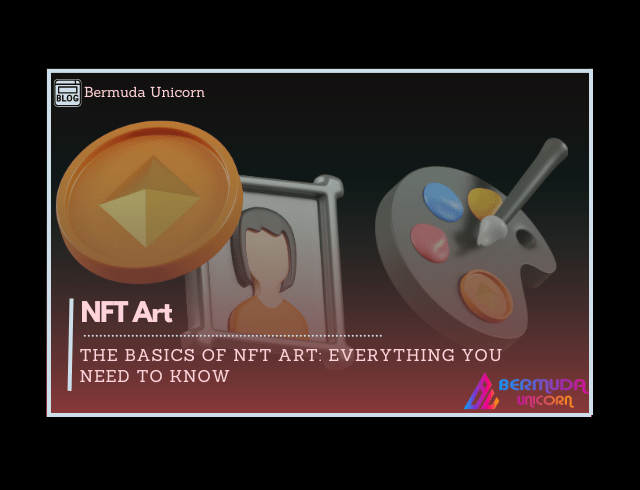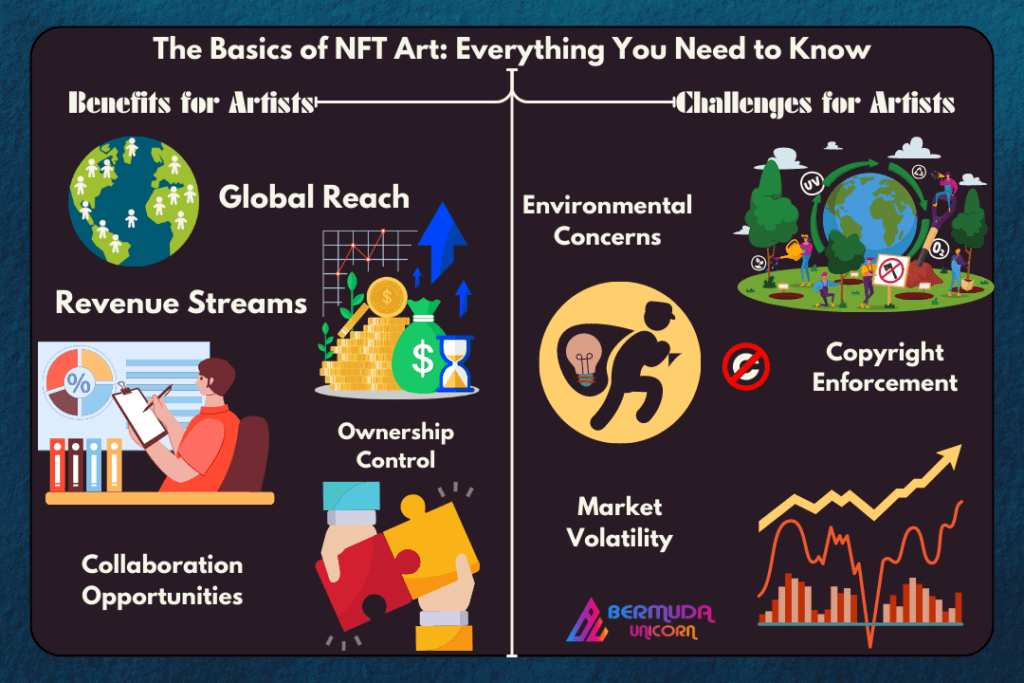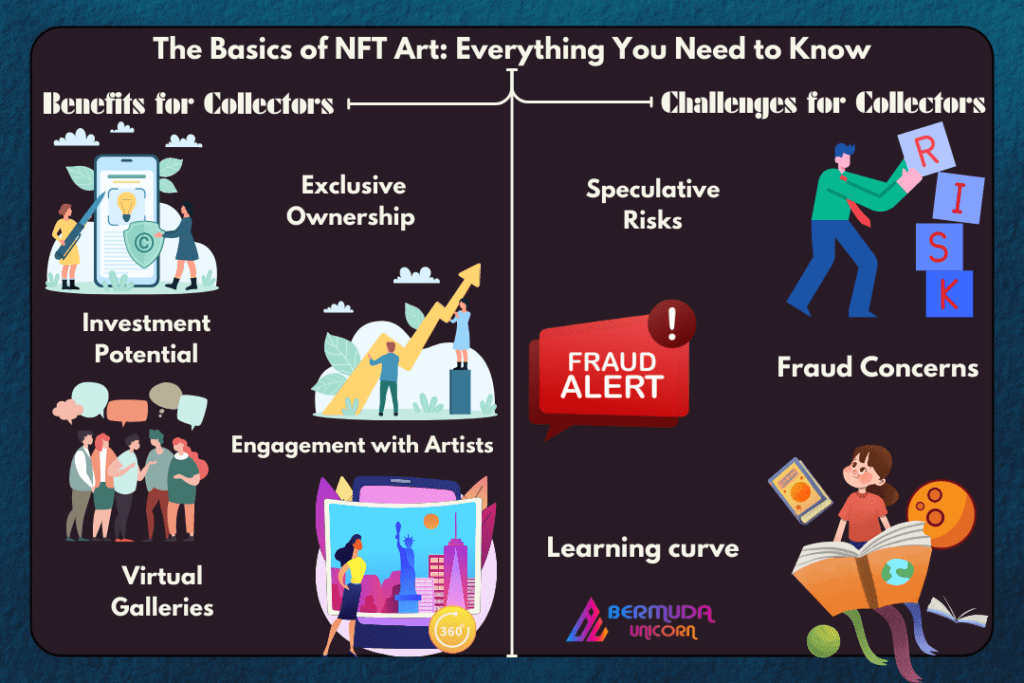![]()

Introduction
Non-Fungible Tokens (NFTs) have undoubtedly taken the art world by storm, revolutionizing the way we perceive ownership, creativity, and value in the digital era. These unique digital assets, firmly rooted in blockchain technology, have radically disrupted traditional art markets, offering artists and collectors alike a novel and innovative way to tokenize and own digital creations. In this blog, we will delve deeper into the basics of NFT art, exploring not only what NFTs are but also how they work and their profound impact on the art industry. Moreover, we will discuss the numerous benefits and challenges that NFTs present to artists and collectors, shedding light on the promising potential and potential pitfalls of this fascinating phenomenon.
Understanding NFTs
NFTs have revolutionized the art scene in Singapore, offering unique digital assets representing ownership of distinct items. Unlike cryptocurrencies, NFTs have a unique token ID, ensuring scarcity and provable ownership of digital art. Blockchain technology and smart contracts provide transparency and new revenue streams for artists. However, concerns about environmental impact and plagiarism challenges persist. Nonetheless, NFTs empower Singaporean artists with autonomy and engagement, reshaping digital ownership and value in the local art industry.
How NFTs Work
NFTs operate on blockchain networks, with Ethereum being the most popular platform for NFT art. The process of creating an NFT involves artists “minting” their digital artwork. During minting, a unique token is created on the blockchain to represent the specific art piece. The blockchain then stores the metadata and characteristics of the artwork, ensuring transparency and immutability. As a result, the authenticity, provenance, and ownership history of the artwork can be verified, ultimately adding significant value to the NFT.
The blockchain technology underpinning NFTs ensures decentralized ownership and transaction records. Artists and collectors have complete control over their NFT assets without the need for intermediaries like galleries or auction houses. This direct and secure interaction fosters trust and transparency between artists and their supporters.
Impact on the Art Industry
The rise of NFT art has ushered in a paradigm shift, democratizing the art market and challenging conventional art ownership. Artists no longer solely rely on galleries or agents to showcase their work. NFTs enable artists to reach a global audience directly through various online platforms, social media, and virtual galleries, breaking geographical barriers and promoting inclusivity.
One of the most significant advantages for artists is the introduction of new revenue streams. When artists mint their work as NFTs, they can program royalties into the smart contract. This ensures that artists receive a percentage of each subsequent resale of their art, even after the initial sale. This innovative feature addresses a long-standing issue in the traditional art market, where artists rarely benefit from the appreciation in value of their works after the first sale.
For collectors, NFTs offer a unique ownership experience. Owning an NFT means having verifiable proof of ownership and authenticity, a highly coveted aspect in the digital realm. The ability to own exclusive digital art pieces and bragging rights associated with these rare assets has driven demand, leading to remarkable prices for some NFT artworks.
Benefits for NFT Artists
1. Global Reach: NFTs empower artists to connect with a worldwide audience without being confined to physical locations or traditional gatekeepers.
2. Revenue Streams: NFTs provide ongoing compensation for artists through royalties on secondary market sales, creating a sustainable income source.
3. Ownership Control: Artists can define the terms of usage and maintain control over their intellectual property through smart contracts.
4. Collaboration Opportunities: NFTs foster collaboration between artists and creators, encouraging a sense of community and innovation.

Challenges for Artists
1. Environmental Concerns: The energy consumption associated with some blockchain networks, particularly Ethereum, has raised environmental concerns.
2. Copyright Enforcement: While blockchain ensures ownership, artists must remain vigilant in protecting their work from copyright infringement and plagiarism.
3. Market Volatility: The NFT market can be unpredictable, impacting artists’ income and stability from sales.
Benefits for Collectors
1. Exclusive Ownership: Collectors gain ownership of unique, one-of-a-kind digital assets, with verified scarcity and authenticity.
2. Investment Potential: Some NFTs have shown significant appreciation in value, offering collectors potential investment opportunities.
3. Engagement with Artists: Collectors can directly interact with artists, attend virtual events, and gain access to exclusive content.
4. Virtual Galleries: NFT platforms offer virtual galleries, providing art enthusiasts access to art from around the world.

Challenges for Collectors
1. Speculative Risks: The NFT market is still relatively young and can be subject to speculative bubbles, requiring cautious decision-making.
2. Fraud Concerns: Ensuring the authenticity and provenance of NFTs is essential to avoid fraudulent or stolen digital assets.
3. Learning Curve: Understanding blockchain technology and NFT processes can be complex for newcomers to the space.
Conclusion
NFT art represents a transformative frontier in the art world, reshaping digital ownership and creativity. The unique characteristics of NFTs, enabled by blockchain technology, offer artists and collectors unparalleled opportunities and challenges. As the NFT space evolves, responsible adoption, education, and innovation will be vital to maximizing the potential benefits and addressing the associated challenges. With proper navigation and exploration, NFTs have the potential to drive creativity, inclusivity, and transparency, ushering in a new era of art appreciation and ownership in the digital age.
